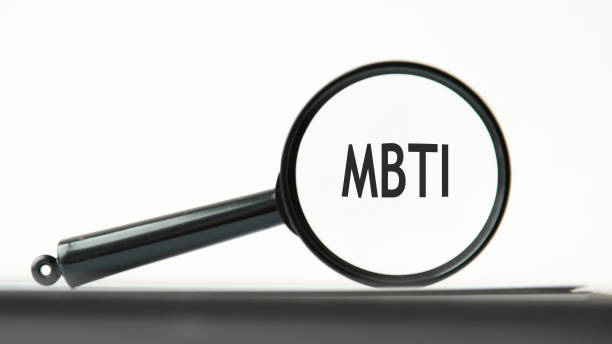WHY SOME PEOPLE GET MORE SEXUAL PRACTICE THAN OTHERS
or, What the H E Double Hockey Sticks Kind of Alpha Males Are These Playing-House Patriarchs?
[adapted from an essay originally posted in 2018 at biblicalfamilies.org]
[TDLR:CAMERA warning: this one’s not for those with short attention spans]
During the 1985/1986 school year, one of my auxiliary duties as manager of Carnegie-Mellon-University-owned-and-leased off-campus apartment housing was to conduct programs open to all CMU students about the Myers-Briggs (MBTI) personality test.
[credit: cmu.edu]
Fast forward to 2018: during one of my hiatuses, the Biblical Families online Forums had conducted a thread in which a merry band of men had dissected the MBTI. A great many useful and productive insights into the Myers-Briggs, as well as a number of related online resources, had been shared during the brief course of that March 2018 discussion in which I had not participated, so I took time later in the year to review their comments and do significant other research. One particularly useful such resource is at https://www.typelogic.com, because, in addition to providing links to free versions of the Myers-Briggs (most of which are close enough to approximating the official test to be sufficiently useful), the typelogic site provides full explanations of each of the 16 different identified types – and names for and descriptions of the 16 types of relationships one can possibly have with one’s own and the other 15 different types. Other helpful resources were found at: https://www.myersbriggs.org/my-mbti-personality-type/mbti-basics/; https://www.truity.com/test/type-finder-personality-test-new; https://keirsey.com/temperament/rational-overview/; https://www.rooshvforum.com/thread-57715.html; https://www.infjs.com/threads/alpha-beta-delta-gamma-omega-sigma-personality-archetypes.30329/; https://www.quora.com; https://www.reddit.com/r/mbti/comments/4lpk2j/interactions_between_the_four_quadra/; https://www.the16types.info/vbulletin/content.php/15-Socionics-Four-Quadra; https://www.slayerment.com/files/slayerment/images/mbti-mf.png; https://www.personalitycafe.com; https://personalityatwork.co; https://en.wikipedia.org/wiki/Socionics; http://typelogic.com/ and https://www.16personalities.com/personality-types.
In reviewing this information after a 33-year hiatus, I recalled a few things that deserve mention before delving into the meat of this essay.
The first is a technical issue: if you peruse discussions of the Myers-Briggs, you’ll notice sometimes that one of the capital letters is substituted by the capital letter ‘X’; when that happens, it means that the points in discussion apply to the formulation no matter which of the two letters is present in that slot; in that case it’s an either/or. Thus, EXTP stands for both ENTP and ESTP and is likely pointing to something the two have in common.
Secondly, I originally learned a further style of notation that has always seemed far more useful, not only for self-understanding, but also for comprehending why things play out the way they do between oneself and another person for whom one has such Myers-Briggs results. Here’s how it goes:
· Take the test at a site like Truity at which you’re provided not only the letter results but the spread between the two alternatives on each of the four scales.
· If the higher score is under 55, substitute a lower case ‘x’ for whatever letter was part of your result in that slot; this, as opposed to the capital ‘X,’ stands for insufficient distinction between one and the other, not necessarily that one is both; one could be both, but one could also just be non-intense in that realm.
· If the higher score is 55-59 in a given slot, substitute a lower case letter for the upper case letter; e.g., ‘p’ instead of ‘P’ or ‘e’ instead of ‘E.’
· Only if the score is 60 or higher does one use upper case letters, because that indicates that one end of that spectrum is at least 50% stronger than the other.
Thus, individuals tend to have results that look like xSfJ or EnxP or even xxxx, a scoring a female student in CMU’s theater department obtained in one of my mid-80s workshops. She, by the way, went on to a successful career as a character actress. Surprising?
Thirdly, I’d learned long before showing up at CMU that the Myers-Briggs is not an ironclad identifier of personality traits (being self-administered, it’s always going to be suspect), I did, however, become sold on its general, albeit limited, usefulness.
Keep in mind, though, that we’re talking about a personality test – not a skills test, an occupational test or an intelligence test. IQ tests — despite whatever progressivist propaganda one tends to encounter in mainstream media and public education — are more thoroughly vetted than just about anything out there. The volumes of legitimate stress-testing that IQ tests have undergone over the past century attests to not only their accuracy but their generalized validity at both assessing raw talent and predicting future performance, because they rely on almost no previously-acquired knowledge but instead are designed to measure how well one rapidly utilizes newly-acquired information to solve hitherto-unknown problems. One can get tutoring and practice for hours daily over the course of decades and at best superficially improve one’s IQ score by about 10 points – and that doesn’t really reflect an increase in IQ, just an increase in one’s ability to take the tests. IQ is thus pretty immutable.
Personality tests instead involve internal mental processes that resist holistic measurement. One’s behavior is quite measurable; one either can throw a baseball 30 yards or one cannot. However, one has an inner life that is almost entirely private other than what one tells others about it.
One’s inner life is affected by a great many internal factors, including one’s IQ. But personality, by definition, is how one brings one’s inner self out into the outer world; it’s the manner in which one tends to express oneself in interactions in one’s relationships and communities. The Myers-Briggs is not a foolproof measure of that set of tendencies, but it’s a pretty darn good one, especially if one challenges oneself to go beyond the horoscope-type all-positive-spin end of the descriptions.
What do I mean by all-positive spin? First and foremost, no matter which variation of title-assignment one finds related to the MBTI, every name assigned to each of the 16 categories has a positive connotation, but in real life not everyone comes across as deserving of such appealing associations. I don’t write this as a criticism, and I’m not inviting general personal attempts to be overly critical of oneself or of others; among readers of this essay, and ideally in actual support groups, the focus should be on mutual edification and voluntary mutual cooperation – not on ripping apart each other’s egos. However, we all have our dark sides, and, while some people let those dark sides take the lead, what can be more useful is to identify one’s potential dark side to know what may need to guard against.
[credit: Maria Petrova / Zaborona]
Therefore, after failing to find such a comprehendible dark-side list elsewhere, I took the down-side descriptions found at psychologyjunkie.com and devised my own monikers. Here’s an example, and I single it out for 2 reasons: (1) it’s the most prevalent in the general population of the classic alpha male Myers-Briggs results, and (2) it has another singular characteristic worth mentioning: ESTJs are susceptible to misrepresenting themselves; not only are they the most likely to claim to have a different Myers-Briggs result than their own, they are the most prone to projecting their true nature onto others. Why would they do that? Keirsey calls them The Supervisor, and 16personalities.com is closer to the mark with The Executive, but in real life we sometimes better know these Executive-Supervisors as Dictators (ESTJs and their more subtle ISTJ introverted counterparts are generally recognized to be control freaks). While researching for the original 2018 thread on which this essay is based, I put “know-it-all” and “Myers-Briggs” into my search engine; one online ESTJ chat room participant stated that he knows a fellow-ESTJ a mile away, “because we’re all know-it-alls, even though many deny it during any minute when they’re not busy proving they’re the most informed among us.” (ISTJs – whether Inspectors or Suppressers – do not share this need to prove anything to others; they have in recent years become better known as Karens.). Anyway, unless one is the actual head of a large organization, it’s unpopular to be seen as a Dictator, so ESTJs have a tendency to disguise themselves – and are certainly savvy enough to manipulate their own test results as well. They tend to have just enough self-awareness to recognize what it is about them that repels others – but not enough to transcend those traits.
Back to our regularly-scheduled program: it’s not entirely uncommon within organizations predominantly comprised of adult males for assertions to be made along the lines of, “Naturally, most of the men here are alpha males.” I discovered in the course of researching this topic 7 years ago why that’s rarely likely to be the case no matter how much the men want to believe it. Because alphas are predisposed to chart their own paths, they are typically underrepresented in most male-dominated circles.
I’ve been off-and-on studying the whole notion of alpha males since 1976 and have encountered some fascinating thinking on the subject, including what I’ve now learned about how alpha-etc categorization correlates with Myers-Briggs results, because that became the last puzzle piece in my 2018 contemplation.
[credit: pexels.com]
The existence of alpha males is something most people take for granted, but progressivism-dominated social science has been divided on the subject, with many in the field denying that there’s any validity whatsoever to categorizing people in that manner (side note: the social work field also wants to deny the existence of sociopaths or any form of incorrigibility, so that should tell us something; some folks simply believe that refusing to label differences will make those differences disappear, but let’s just label them ‘label deniers,’ OK?). Until very-recent anthropological history, those who recognized the existence of alpha males tended to believe there were just two kind of men: (1) alphas, and (2) everyone else, who were then labeled betas (it wasn’t uncommon for theorists to ludicrously believe that almost all women were betas): or, alternatively, leaders and followers (and those who combine the two), if you will. If one restricts consideration of Myers-Briggs results to how alpha and/or beta each result tends to be, one gets the chart below (complete with Keirsey- and 16personalities.com-provided positive monikers, as well as my dark-side equivalents), followed by the percentage of that result in the general male population:
Alpha/Beta Scale (High/Mid/Low):
Classic Alphas (27.0% of general male population):
ENTJ [(light side) Fieldmarshall/Commander/- (dark side) Bully]: high alpha, low beta (1.7% of males) [highest alpha]
ESTP [Promoter/Entrepreneur/- Prankster]: high alpha, mid beta (5.6%)
ESFP [Performer/Entertainer/- Narcissist]: high alpha, mid beta (6.9%)
ESTJ [Supervisor/Executive/- Dictator]: mid/high alpha, low beta (11.2%)
ENFJ [Teacher/Protagonist/- Primadonna]: high alpha, high beta (1.6%)
Classic Betas (62.8% general):
ESFJ [Provider/Consul/- Gossip]: mid alpha, high beta (7.5%)
ISFJ [Protector/Defender/- Pharisee]: low alpha, high beta (8.1%)
ISTJ [Inspector/Logistician/- Suppresser]: mid alpha, mid/high beta (16.4%) [most prevalent male archetype]
ENFP [Champion/Campaigner/- Space Cadet]: mid alpha, mid beta (6.4%)
INTJ [Mastermind/Architect/- Steamroller]: mid alpha, mid beta (3.3%)
ISTP [Crafter/Virtuoso/- Sociopath]: mid alpha, mid beta (8.5%)
ISFP [Composer/Adventurer/- Hothead]: mid alpha, mid beta (7.6%)
ENTP [Inventor/Debater/- Prevaricator]: mid alpha, mid beta (4.0%)
[credit: pinterest.com]
And the Disconnected (10.2% of the general population):
INTP [Architect/Logician/- Snob]: low alpha, low beta (4.8%)
INFP [Healer/Mediator/- Crusader]: low alpha, low/mid beta (4.1%)
INFJ [Counselor/Advocate/- Alinskyite]: low alpha, mid beta (1.3%) [lowest-alpha-percentage]
[Note: within each of the above three groupings, the higher up in the grouping, the more likely one is to have what is known in social sciences as reproductive success, which entails successful dating, mating and replicating (the latter only coming into play when engaging in opposite-gender relationships). Individuals will vary within any group or category, but statistically INFJs are the least likely to have spouses or children, followed closely by the INTP category, but only due to the fact that INTP is the most common Myers-Briggs result for homosexual men, who have, on average, more sexual partners than any other category but far, far fewer wives or children; that explains them still being at the top of the reproductive success ladder within their category even though they’re functionally not going to produce many offspring; ‘reproductive success’ is also a more polite, professional, diplomatic manner of referring to how likely one is to get laid by multiple partners.
Perhaps the first significant stab at applying personality grouping in a more complex manner than just α/ β to the alpha-male question was the socionics quadra system, which divided people into alphas, betas, deltas and gammas. This could start getting even further into the weeds, but in this schema, the betas are only those men who provide the back-up system in society for alphas – they are followers, but only of alphas. Gammas are innovators and rebellious. The quadra system, however, made too much effort to even the scales between genders, so it paradoxically neither identifies nor describes the characteristics lay people generally associate with alpha males; furthermore, it most suffers from lumping together all low-motivation and awkward folks into one large category.
[credit: sigmagame.substack.com]
A further improvement was revealed in 2011 by a member of the Red Pill movement (research on that I leave up to your own level of motivation): a man named Theodore Beale, who operates under the online pseudonym, Vox Day. Despite or perhaps because of the fact that they will never receive recognition from the social sciences community, and despite inevitable human imperfections, I find Mr. Beale’s categories to constitute a much more useful way for both women and men to understand the male world. He expanded the quadra system into a septa one, dividing people into: alpha, beta (eventually renaming betas as ‘bravos, perhaps to create a useful distinction between them and the original understanding of them just being all those who followed alphas), delta, gamma, omega, sigma and lambda – focusing mostly on how his categories apply to men, and hinting that it might be useful to use up all the Greek letters, starting out with moving the lambdas to be labeled as zetas, because they will always be at the bottom of the hierarchy, even though they mostly won’t ever care.
(I would myself begin any expansion by correcting the socionics quadra system’s largest problem that the Socio Sexual Hiearchy only minimally vitiates: the gamma category continues to have too many unconnected leftovers dumped into it, perhaps due to Mr. Beale’s and some of his fellow travelers’ visceral dislike of and therefore failure to comprehend those on the autism spectrum; his online chat associates – at least as of my 2018 research – tended to be especially hostile toward mildly-autistic men, referring to them derisively as Aspies and Spergs, frequently arguing about whether ‘aspies’ are gammas or omegas; otherwise, though, Theodore Beale advanced understanding by removing veils related to political correctness, so hallelujah on that score.)
Here is my abridged version of his often-sharp-edged descriptions. I will include the author’s 2011 estimates of average sexual success, confirmed later by valid surveys that had determined as of 2015 that overall lifetime averages for Americans, male and female, to be 7-10 sexual partners (in intervening years that has changed a bit without changing the overall numbers: the men having sex are having it with a wider variety of women, and female body counts have increased, but they’re having sex with a smaller cohort of men; in other words, they’re all basically sharing the same small percentage of men – polygyny without commitment). Beware that the focus is more on pre-wedding attributes rather than on what kind of husbands these categories of men will be, but one can fairly easily extrapolate:
[credit: pexels.com]
Alpha: “The alpha is the tall, good-looking guy who is the center of both male and female attention. The classic star of the football team who is dating the prettiest cheerleader. The successful business executive with the beautiful, stylish, blonde, size-zero wife. All the women are attracted to him, while all the men want to be him, or at least be his friend. At a social gathering like a party, he's usually the loud, charismatic guy telling self-flattering stories to a group of attractive women who are listening with interest. Alphas, however, tend to be more interested in how women improve their group status than in depth of relationship.” This group includes not only commanding leaders but men who primarily use their prowess to become male sluts (which accounts for the large average number of sexual partners).
Lifetime average number of sexual partners for alphas = 30.
Myers-Briggs Alphas according to VD Septa (27.8% of general male population): ENXJ, ESTJ and ESXP (these comprise the same 5 M-B results identified as classic alphas by the strict alpha/beta-dichotomy classification above; also, paradoxically, women are more likely to be ESFP’s than are men, but otherwise, these low-percentage results are male-dominant categories) and some ENFP who are very likely either Enfx or Exfp.
[credit: sigmagame.substack.com]
Beta/Bravo: “Betas are the good-looking guys who aren't as uniformly attractive or socially dominant as the Alphas but are nevertheless confident, attractive to women, and do well with them. At the party, they are the loud guy's friends who showed up with the alcohol and who flirt with the tier-one women but cheerfully pair up with the tier-two women. Betas tend to genuinely like women and view them in a somewhat optimistic manner, but they don't have a lot of illusions about them either. Betas tend to be happy, secure in themselves, and are up for anything their alpha wants to do. When they marry, it is not infrequently to a woman who was one of the alpha's former girlfriends.”
Lifetime average number of sexual partners = 20.
MBTI Betas (18.2% of males in general): Vox Day seriously cut back this category to only XSFJ, and the Delta category shares some of the ISFJ (ESFJ is more common among females, ISFJ among males; generally speaking, women are more extroverted and judgmental than are men, so men dominate IP combinations and women dominate the EJ’s), which would mean betas are outnumbered by alphas 2:1. These are the classic wingmen – but, in real life, this means that not every alpha gets one, which actually more accurately reflects reality, in contrast to how alphas are generally portrayed in teen movies as having a whole crew of conceited ass-kissers hovering around them.
[credit: sigmagame.substack.com]
Delta: The normal guy. Deltas represent the plurality of men in the septa system, which is simply a matter of common sense (in the quadra system, deltas constitute the majority of men). Beale: “They can't attract the most attractive women, so they usually aim for the second-tier women with very limited success, stubbornly resist paying attention to all of the third-tier women who are comfortably in their league,” and most often end up with fourth-tier women (both due to ignoring their female compatriots and to the well-known tendency for women to want to ‘marry up’). This is ironic, because deltas would almost always be happier with their closest female equivalents. When a delta does manage to land a second-tier woman, he is constantly afraid that she will lose interest in him and will, not infrequently, drive her into the very loss of interest he fears by his non-stop pouring of attention upon her. “In a social setting, deltas are the men clustered together in groups, each of them making an occasional foray towards various small gaggles of women before beating a hasty retreat when direct eye contact and engaged responses are not forthcoming. Deltas tend to put females on pedestals and have overly-optimistic expectations of them; if a man rhapsodizes about his better half or is an inveterate White Knight, he is almost certainly a delta. Deltas like women but find them mysterious, confusing – and are sometimes secretly a little or even a lot afraid of them.”
Lifetime average number of sexual partners = 7-10. Of course. They’re The Average Guy.
MBTI Deltas (32.1% nationwide): ISTJ, ISFP, some ISFJ (1st, 3rd and 4th highest numbers of people are in these 3 categories, respectively)
[credit: voxday.substack.com]
Gamma [if author VD makes good on his threat to further subdivide these categories, this one will be the first to be broken up]: “The introspective, the unusual, the unattractive, and all too often the bitter. Gammas are often intelligent, usually unsuccessful with women, and not uncommonly all but invisible to them; the gamma alternates between placing women on pedestals and hating the entire sex [but those that are unattractive and bitter due to inability to find mates are of course those most likely to hate women]. Too introspective for their own good, gammas are the men who obsess over individual women for extended periods of time and supply the ranks of stalkers, psycho-jealous ex-boyfriends, and the authors of excruciatingly romantic rhyming doggerel. In the unlikely event they are at the party, they are probably in the corner muttering darkly about the behavior of everyone else there... sometimes to themselves. Gammas can often have a worship/hate relationship with women, the current direction of which is directly tied to their present situation. However, they are sexual rejects even when not social rejects.”
Despite popular female-justification lore, there is no direct equivalence between MGTOWs and Incels. MGTOWs are found among all masculinity archetype groupings – but the majority of Incels are heterosexual Gammas, and the vast majority of the remaining Incels are Omegas and Lambdas.
Lifetime average number of voluntary sexual partners = 3 [but this one varies wildly from 0 to 10, depending on the subgroup].
MBTI Gammas (9.9% of males in general – and likely to expand as the percentage of autists continues to increase): ENTP, ISTP (both mostly male), some ENFP (mostly female)
[credit: sigmagame.substack.com]
Omega: “The truly unfortunate. Omegas are the social losers who were never in the game. Sometimes creepy, sometimes damaged, often clueless, and always undesirable. They're not at the party. It would never have crossed anyone's mind to invite them in the first place. Omega men are either totally indifferent to women or hate them with a borderline homicidal fury.”
Lifetime average number of sexual partners = 0-2 [Omega wins the most likely to be a virgin contest].
MBTI Omegas (keep in mind that some male INFJs are sigmas rather than omegas, who are 4.4% of the general population): INFP and some INFJ (both more likely to be female, but together they make up fewer than 5% of all people)
[credit: Steve Jobs/sigmagame.substack.com]
Sigma: “The outsider who doesn't play the social game and manages to win at it anyhow. The sigma is viscerally hated by alphas because sigmas are the only men who don't accept or at least acknowledge, however grudgingly, their social dominance. Everyone else is vaguely confused by them. In a singles social situation, the sigma is the man who stops in briefly to say hello to a few friends accompanied by a Tier 1 girl that no one has ever seen before. Sigmas like women but tend to be contemptuous of them. They are usually considered by most to be strange – but are rather unbothered by this. Gammas often like to think they are sigmas, failing to understand that sigmas are not social rejects; sigmas are actually at the top of the social hierarchy along with alphas, despite their refusal to play by its rules.”
Lifetime average number of sexual partners = 30.
MBTI Sigmas (4.6% of men nationwide): INTJ, most ENFP males and some INFJ (note what a ‘reproductive-success’ difference it can make for an INFJ – also known by the archetype Advocate – depending on whether his life choices leads him toward sigma success or omega oblivion)
[credit: sigmagame.substack.com]
Lambda: “Those men who have quite literally no interest in conventional male-female sexual relations. They clearly have their own hierarchy of sorts, but I can't say that I know much about it other than it appears to somehow involve youth, free weights, and mustaches.” What he’s alluding to is that most of these men are homosexuals. However, increasingly obvious – and exacerbated by a culture that has slowly removed many of the traditional rewards for exhibiting responsible manliness – are growing numbers of men who have simply checked out of the dating and marriage game through lack of interest; their motivation level was never high, and now they live life as if women simply aren’t worth the trouble. Lambdas are almost entirely male, and I predict that, absent a turnaround in our cultural decline, INTP will eventually surpass INTJ as far as the most predominantly-male category – if it hasn’t already done so.
(After the loss of males due to self- and other-inflicted violence, this male-dominated Lambda category is probably the cultural factor most responsible for the fact that so many marriageable women end up being in the leftover category. I would further disagree with Theodore Beale when it comes to identifying the female omegas as being dominated as are the omega men by those who are “[s]ometimes creepy, sometimes damaged, often clueless, and always undesirable.” It may be a chicken-or-the-egg kind of thing: which came first, (a) being damaged and undesirable, or (b) being treated as unworthy by the increasing numbers of lambda men who would otherwise naturally be their partners? It’s worth considering, among men willing to make lifetime commitments to multiple women, if we may be predominantly paying lip service to expanding our families for the purpose of providing companionship for widows and the downtrodden if in fact most of us are instead predominantly seeking second and third partners who are either young virgins, on the one hand, or women Theodore Beale would label as belonging to Tier 1, on the other.)
Lifetime average number of sexual partners for lambdas = 100 (well, actually 1 or 2, if one removes the gays, and there are almost no virgins in this group; having at least one experience with a woman is a required part of the equation of determining that relationships aren’t worth the effort; the straight men in this group are predominantly low-sensation-seekers and revere alcohol and other depressants as their drugs of choice).
MBTI Lambdas (3.7% and climbing, nationwide): straights: mostly INTP; gays: XXXP and INFJ (I’m not offering any encouragement to switch sides in this regard, but could it be any more obvious that the most successful strategy for increasing sexual partners is not to seek biblical polygamy but instead to be a practicing male homosexual?)
[credit: datingnews.com]
If one has comments on all this, please feel free to share them, publicly or privately.
Postscripts 1 and 2:
1st postscript (which accompanied the 2018 essay): I had just recently re-taken the Myers-Briggs and received the same score I’d received the previous three times. As a younger man, I was in x territory on E/I and T/F with xNxp being my most common outcome, and then began to gravitate toward solid e and f, usually scoring eNfp. In recent years, though, it has been ENFp, with the p score at 56. F was 61, E was an all-time high of 87, and N was 97, but N has never been less than 88 for me. I think that maybe all this can be explained by the fact that I’m getting much more extroverted about my intuition, whereas as a young man I was convinced that it was something I was better off hiding. One could say the jury is still out on that, but in my viewpoint the jury only has One Person serving on it. And He seems to be telling me to trust what He has put in me. I pray for each of you that you have or develop that same level of trust.
Start here (https://www.truity.com/test/type-finder-personality-test-new), if you don’t already know yourself in this way. Create a free account, and you can even save your results.
2nd postscript: I tend to think these two things are correlated, but you can decide for yourself:
1. In 2021, I experienced the near destruction of my immediate family. I refer to it as The Coup, because my wife, who had for decades both threatened divorce and sabotaged the discipline of our children, formed an alliance with our youngest daughter, who was our only remaining child at home, in which my wife conspired with her to remove all remaining authority of me over her. The short version of what then transpired is that I finally embraced patriarchy and took effective steps to not only regain a proper relationship with my daughter but set my marriage with my wife on a successful footing that leaves no doubt about my headship. Our household has transformed from one of frequent chaos into one of both sanity and respectful cooperation, as well as considerable improvement in the bedroom. I thus consider 2021 to have been perhaps the best year of my life.
2. In the wake of The Coup, I twice re-took the MBTI, and its results were consistent: changing from my decades-long stasis but also not resembling the results I obtained as a young man: I’m now ENxj, which is a result straddling Sigma and Alpha.
I have never obtained an even partial alpha male result on any test before 2021.
Make of it what you will.





















Which site?
Hey, I looked up that site. To mark answers it gives two propositional prompts. Do you respond to the first one on a 1-5 scale? It doesn’t have instructions and the fact that two contrasting prompts are provided for the same response, I’m not sure how to take it. So, I’m pretty sure my results are just 🤦♀️🤦♀️🤦♀️🤦♀️